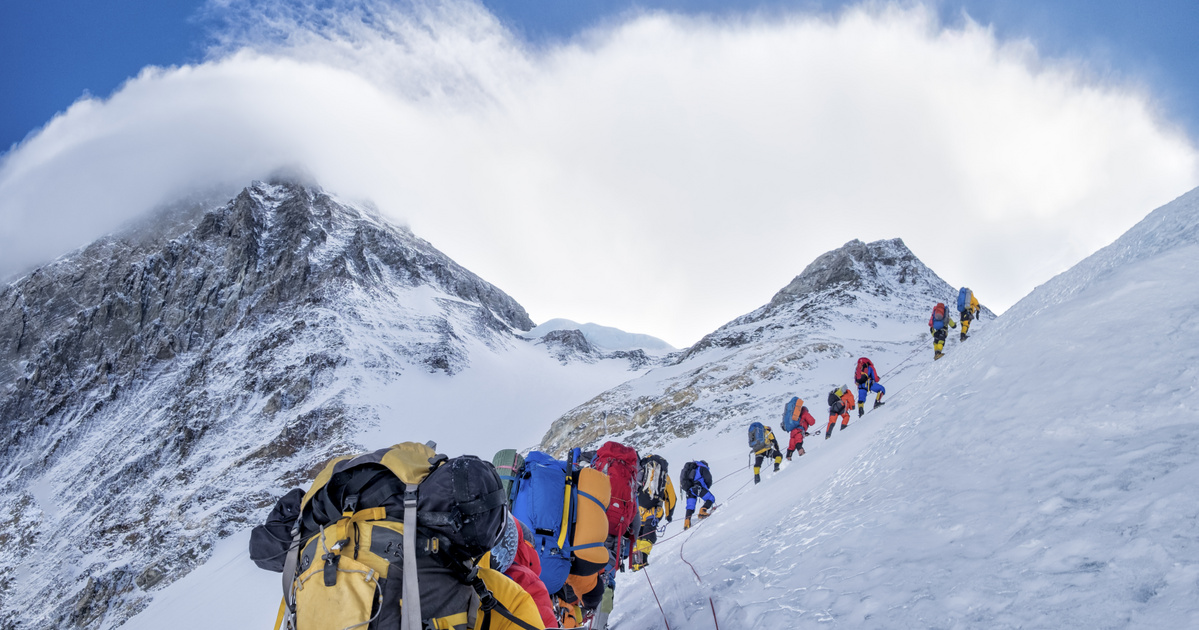According to statistics, Mount Everest is not the most dangerous mountain peak in the world. However, if you ask someone what is the highest peak in the world, most people will immediately say that it is Everest. But the question is more complicated than this if we also add a comparison to what?
Perhaps a relatively large number of people can answer this question: relative to sea level. Yes, but sea level also changes with location. Mount Everest, for example, is too far from the nearest sea, so it wouldn’t be visible from there. From the point of view of practice, we take the so-called mean sea level as a standard. If we measure the highest mountain peaks from here, the answer is of course obvious. Mount Everest, known locally as Tsomolungma, is indeed the highest mountain peak in the world, rising 8848 meters above mean sea level. Increasing Also due to the movement of tectonic plates.
But what happens when we measure the height from the bottom of the mountain, that is, from the bottom to the top of the mountain? It would make sense after all. In this case, the situation is different: Mauna Kea in the Hawaiian Islands is more than 10,000 meters higher from bottom to top, and there is exactly 10,211 meters between the bottom and the top of the mountain. The catch is that only 4,205 meters of it is above sea level, and the rest is covered by the Pacific Ocean.
So if we were to lower the level of the oceans, Mauna Kea would be the highest mountain on earth.
Photo: Rebecca L.Latson/Getty Images Hungary
Instead of sea level rise, we can compare the height of the peaks to their distance from the center of the Earth. After all, it also looks logical. However, in this case, Mount Everest would not be the winner either. Chimborazo is located in South America, much farther from the center of the Earth than Mount Everest.
The reason for this is that the Earth is not perfectly spherical and gets distorted as it approaches the equator. On the other hand, Chimborazo is located only 1 degree south of the equator, so it has an advantage in this regard: its summit is 2072 meters further from the center of the Earth than Mount Everest.
Again, the situation is different if instead of the absolute height, i.e. the height above sea level, we examine the relative height, i.e. the height of the measured peak relative to its particular environment. The easiest way to understand this principle is to compare, for example, the height of wooden houses on the Ethiopian plateau with the height of Burj Khalifa, the pride of Dubai. Since the elevation of the Ethiopian plateau is 4,000 meters above sea level, the absolute height above sea level of any wooden house there is much higher than that of the Burj Khalifa. However, the latter would easily win considering the relative height, as it is 830 meters higher than its surroundings.
In terms of relative height, among the mountain peaks, Kilimanjaro will definitely win, because it does not belong to any mountain range. That is why it rises almost out of nowhere, at an altitude of almost 6,000 meters. Of course, this cannot be said about Mount Everest, because as part of the Himalayas, it is surrounded by several peaks with a height of more than 8000 meters, and even the so-called base camp is located at an altitude of 5364 meters above sea level, that is, the peak is 3484 meters. meters measured from here. Of course, it can be noted that if the title of “tallest building in the world” is given based on relative height (Burj Khalifa), then why is the highest mountain peak determined based on absolute height?
(Cover photo: Mount Everest. Photo: Getty Images Hungary)








































